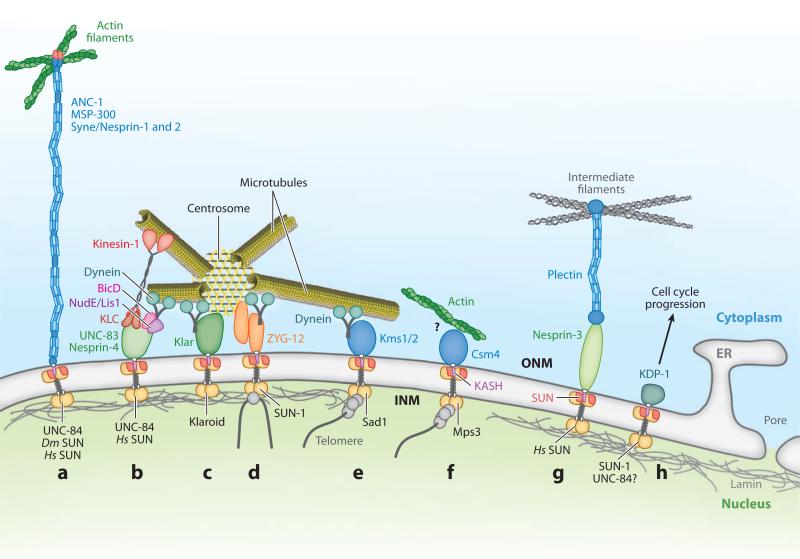Figure 3.
Functions of KASH-SUN nuclear-envelope bridges. KASH proteins are in the outer nuclear membrane (ONM). SUN protein dimers (gold circles) are located in the inner nuclear membrane (INM) with their SUN domains (red ) in the perinuclear space, where they interact with KASH domains (purple) to bridge the nuclear envelope. (a) Giant KASH proteins (blue) tether nuclei to actin filaments (green). (b) UNC-83 and Nesprin-4 (green) function as nucleus-specific cargo adaptors for microtubule motors kinesin-1 (red ) through the kinesin light chain (KLC, dark red ) and, at least for UNC-83, dynein (teal) through BicD and NudE/Lis1 complexes (pink and purple). (c) Klarsicht (Klar, green) is thought to interact with dynein for nuclear migration. (d-f ) Nucleoplasmic domains of SUN proteins interact with meiotic chromosomes (gray lines) through adaptors (gray circles) to aid in proper homolog pairing. (d ) Worm ZYG-12 (orange) interacts with a KASH-less isoform of itself and dynein to tether the centrosome to the nucleus, to position the nucleus, and to move chromosomes in meiosis. (e) Fission yeast Kms1 and 2 (blue) recruit dynein to move nuclei and telomeres in meiosis. (f) Budding yeast Csm4 (blue) links actin filaments to the nucleus to move telomeres through unknown intermediates (?). (g) Nesprin-3 interacts with intermediate filaments (gray) through plectin (blue). (h) Worm KDP-1 promotes cell-cycle progression. Dm, Drosophila melanogaster; Hs, Homo sapiens.

